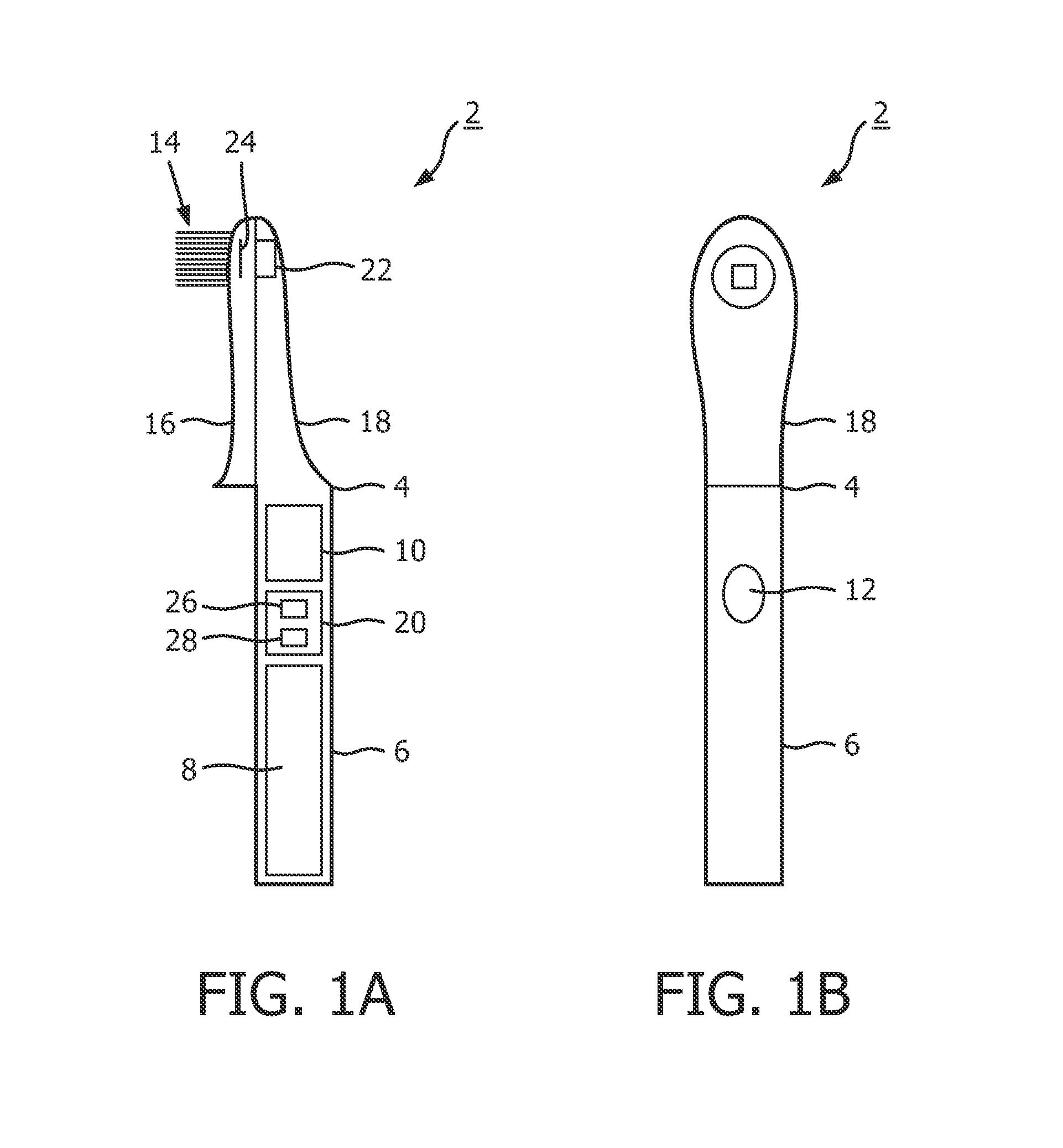Dental apparatus and method of utilizing the same
- Summary
- Abstract
- Description
- Claims
- Application Information
AI Technical Summary
Benefits of technology
Problems solved by technology
Method used
Image
Examples
Embodiment Construction
[0028]The present disclosure describes various embodiments of apparatuses and methods that utilize one or more power levels of excitation light for detecting one or more tooth anomalies such that the tooth anomalies may be removed. Specifically, a dental apparatus, e.g. an electric toothbrush, is configured to provide multiple power levels and / or frequencies of excitation light. More specifically, a first power level (e.g., less than 1 mW) of excitation light having a first frequency, e.g. blue light, is, initially, emitted from the dental apparatus and utilized to detect a distinct autofluorescence associated with tooth material to determine if the dental apparatus is positioned in a mouth. Thereafter, a second power level (e.g., less than 1 mW but greater than the first power lever) of excitation light having substantially the same frequency as the first frequency of excitation light is emitted from the dental apparatus and utilized to detect a distinct autofluorescence associated...
PUM
 Login to View More
Login to View More Abstract
Description
Claims
Application Information
 Login to View More
Login to View More - R&D Engineer
- R&D Manager
- IP Professional
- Industry Leading Data Capabilities
- Powerful AI technology
- Patent DNA Extraction
Browse by: Latest US Patents, China's latest patents, Technical Efficacy Thesaurus, Application Domain, Technology Topic, Popular Technical Reports.
© 2024 PatSnap. All rights reserved.Legal|Privacy policy|Modern Slavery Act Transparency Statement|Sitemap|About US| Contact US: help@patsnap.com










